Rat infestation
Rats are commensal rodents the numbers of which are influenced by our activities, buildings and the landscape we have created. The type, style age and size of our houses and gardens and what we do in them will impact on the number of rats. Some activities such as keeping chicken, feeding the birds and composting using an open heap may be beneficial to the rats while others such as keeping cats or terriers may discourage them.
The main rat species in England is the Norway or brown rat, Rattus norvegicus. The Black rat, R. rattus, associated with the bubonic plague is less common in the UK being mainly restricted to ports or coastal towns where they forage in disused buildings and warehouses but thy are found in larger numbers elsewhere.
Rat tunnels in the soil or at the base of the compost bin are often the first sign of infestation. The tunnels entrance is about 30-40mm diameter. may be visible where damage has occurred.
Although many gardeners and composters will only see rats infrequently, if at all, a study conducted in central New York reported that pests, including rats, were the third most common obstacle to home composting (Tompkins County Compost Study. Prepared by: Cornell Cooperative Extension’s Compost Education Program 2001). Undoubtedly opening a bin to find a rat sitting on the composting looking at you can be a disconcerting even if it only happens once. While rats may visit, or nest in, a compost bin if they are already present in the area composting does not generally attract the rats in the first place.
When rats are feeding, sheltering or nesting in a compost bin burrows can often be seen under the bin or holes are visible chewed into the side of the bin. The signs of their presence in the rest of the garden are also relatively easy to detect
The Norway rat creates burrows and makes “rat runs” along building foundations, garden fences and walls. They will also burrow beneath chicken houses, woodpiles, manure and compost heaps. Nests in compost heaps or bins may be lined with shredded paper, other dry material from the heap or material brought into the bin. The contents of the compost bin make a good restaurant for brown rats as their preferred diet includes cereal grains, nuts, and fruits, meat and fish.
The Black rat seldom digs burrows preferring to nest in locations off the ground in dense vegetation, shrubs, trees, vines etc. They also eat a range of foods that might be found in the compost bin. There preferred diet consisting of fruits, nuts, berries, slugs, and snails.
Signs of Rat Infestation
In addition to the burrows and sightings mentioned above there are other signs that indicate a rat infestation in the garden. Cylindrical rat droppings, with rounded ends, are about 15mm long and 5mm wide may also be found on shed or garage floors particularly where animal or bird food is being stored or round recycling bins
When moving firewood, materials awaiting composting or items in the shed or garage the remains of rat nests are an obvious sign of infestation.. Finding dead rats in the garden with no obvious cause of death is not only a sign that rats are present but may indicate that a neighbour is poisoning them requiring regular checks to ensure that pets do not find and eat other carcases
Rats in Compost Bins
Rats are attracted to compost bins and heaps as a source of food, shelter and as a warm dry place to nest. The compost bin will be particularly attractive during the winter as it can provide warmth and a good supply of food with kitchen scraps being regularly added to the top while the material in the lower part of the bin is relatively undisturbed. Rats need to gnaw hard surfaces to keep their teeth under control as they grow throughout their lifetime so many wooden and some plastic bins will offer little obstacle if the rats smell the decomposing food inside the bin.
Reducing the risk of rat infestation
In this following sections I will look at measures to reduce the risk of rat infestation in conventional bins mounted on the ground i.e. wooden New Zealand bins or Ground mounted plastic bins. The use of “off the ground” fully-enclosed tumbler bins will usually prevent rodent access, but they tend to be expensive and more challenging to use.
Weil’s disease
Rats present a risk of disease as they can be carry the bacterial that causes leptospirosis, as well as other potential pathogens. In humans this is usually results in mild flu-like symptoms, such as headache, chills and muscle pain. However, in some cases the infection is more severe and can cause life-threatening problems, including organ failure and internal bleeding these . In its most severe form, leptospirosis is also known as Weil’s disease.”
Leptospira is spread in rats' urine and can survive in water for several months which plays an important role as a source of transmission of leptospirosis to man and other animals. Direct contact with infected urine on the surface of compost bins, or contaminated water can result in infection as leptospires can penetrate breaches of the skin There is a small risk of catching Weil’s Disease from contact with soil or compost contaminated by rats but by far the highest risk is to farmers and vets is from contact with infected urine or blood followed by fishermen, water sports enthusiasts following contact with contaminated.
In the UK the risk to humans is small with less than 40 cases reported in England and Wales every year. However, while one study showed that 14 percent of rats in the United Kingdom carry the infection the figure can be as high as 90% . It therefore probably a good idea to wear gloves when handling garden compost, to cover cuts or grazes and wash hands after handling compost or warden waste. This risk should be include in any risk assessment.
Temperatures below 4°C and above 37C° will kill Leptospira which favours an optimum temperature of, or about, 25˚C, a moist atmosphere and a pH near neutral. So is likely to survive cold composting but will be killed by hot composting at 40-60˚C. However, if introduced by rats later in the composting process when the compost has cooled during maturation it may survive.
In general compost does not present a problem as even if rats have contaminated the bin. Once the compost is applied to and mixed with the soil, the level of bacteria will be so low that vegetables grown in it will be safe to cook and eat as normal. However, if a cold compost bin or heap is known to have been rat-infested it might be advisable to use the compost in the flower garden or as a mulch round established trees. It is best not to use it round low growing fruits or vegetables that are going to be eaten raw and the edible parts may be in contact with the soil or compost e.g. radish, celery, cucumber, strawberry.
Vegetables, fruit and herbs should always be washed Temperatures below 4°C and above 37C° will kill the leptospira bacteria.
Location of the bin
As the brown rat prefers to move along runs close to walls, fences hedges, etc the bin should be positioned in the open away from potential rat runs. The advantage of leaving an open space round the bin also makes it easier to check for future burrows. As black rats like trees and shrubs it is best to place the compost bin away from these and if trees do overhang the bin cut the branched so that they do not provide a means of reaching the bin.
Material being composted and rat infestation
It is generally accepted that rat infestation of the compost bin will be linked to the composting of bread, cooked foods, dairy products, fish, meat, fatty and processed foods. Some composters even recommend washing eggshells to reduce the smell before adding them to the bin. While these are undoubtedly attractive to rats other kitchen waste such as fruit and vegetable peelings also provide appetizing meals once the rats have gained access. It seems that rats are quite keen on potato peelings and the smell of decomposing fruit certainly seems to attract rats to many school compost bins and food digesters. Indeed some sources suggest that if the above have been removed from the bin and rats are still regular visitors in may be necessary to stop adding vegetable waste from the kitchen until the compost has been removed to empty the bin, and the contents replaced with more regular turning incorporated into the composting system. Alternatively, in persistent cases a sealed tumbler bin raised off the ground may be to prevent entry. However just adding garden or yard waste may not solve the problem as most allotment growers will testify that rats will also be attracted to bins containing plant trimmings and weeds.
Regular Human Interventions
The is some anecdotal evidence that the number of times the heap is disturbed can influence whether it becomes infested by rats. It is certainly true that rats do not like frequent or continued disturbance. Putting the bin near the house or garden path that is used regularly and knocking, kicking or hitting the bin with a stick every time it is passed certainly make it a less desirable residence for rats.
Regular aeration of plastic bins using a commercially available compost aerator or garden fork is also helpful as it disturbs the deeper layers of compost. Regular turning of compost being made in New Zealand or pallet bins has the added advantage of maintaining the temperature of the contents at least during the initial stages of composting.
In a multi-bin system, which includes a maturation bin where compost is "stored" to mature this compost should also be turned particularly if being left for some months.
Rats and Compost bin design
Bin Design
If it is accepted that there will always be some rats in the garden it will be necessary to use physical barriers to prevent access to the compost bin.
The base.
Rats frequently gain access to the bin though the soil on which it is stood. There are several ways in which this risk can be reduced:
- Laying a solid concrete base provides a solution to this problem it also makes it easier to shovel up the compost from the bottom of the bin. Ideally the base should be sloped slightly so that the leachate runs into a gulley leading to a buried bucket so that it can be harvested for use as a compost activator or liquid feed.
- Paving slabs can also be used to provide a less permanent solid base. These must be laid touching each other so that the rats cannot gain access between them.
- Standing the bin on a layer of pepples to make it more difficult for the rats to burrow below or round the bin.
- Removing a layer of soil and laying a 4-6-inch gravel base into which the bin can be placed can be quite effective. This is more effective if used with a weld-mesh base fitted round the bin
- A weldmesh or plaster mesh base can be fitted across the bottom of the bin. Chicken wire is sometimes used but is not recommended as the rats may chew through it. The mesh size is important as rats can get through gaps of 15 mm. The advantage of wire mesh over concrete stands is that it allows worms access and makes drainage easy, although the leachate also drains away.
- If buying a plastic bin, choose one with a base (they may be sold as an extra) or choose a tumbler bin which is located up of the ground. These normally contain small drainage holes which also allow worms to gain access
Lids
Traditionally a bin would have been covered with a tarpaulin or carpet and more recently a compost duvet but to keep rats out a secure, tight-fitting lid is necessary. With square bins where the lid pushes or drops into place, rather than the dustbin type of lid which fits over the rim of the bin, it is necessary to ensure that there is no gap between the sides and the lid to avoid rats gaining access or finding a gap that they can enlarge. As an additional precaution, against rats and strong winds, the lid may be held in place with a bungie cord.
Wooden Bins
A solid-sided bin is obviously more
secure than an open-slatted one. Wooden but open-slatted bins can be made rat proof by lining the inside with wire (see below) or making a separate removable mesh frame that can be attached to the outside. This can be removed for cleaning when necessary and
retains the air flow which is one of the reasons for buying an open slatted bin.
The risk of infestation can be reduced by lining the inside of a wooden bin with galvanised, 13mm x 13 mm (0.5 x 0.5 inches) wire mesh. If the bin consists of separate boards which can be lifted out one by one fixing mesh will mean that the boards will have to be removed as a single sheet. To avoid this the mesh can be fitted to a separate frame and fixed to the outside. If there is not a solid concrete standing the mesh should also cover the base. The lid should also be lined with wire.
It is more difficult to prevent rats gaining entry to Pallet and other wooden bins but on the positive side if they are only three sided or the front can be easily removed they are easy to turn on a regular basis.
Three-sided Pallet bins offer no protection against rats, and it is a case of making a compost mix that does not attract too many visitors and regular turning of the contents.
Over wintered bins where the contents have not been disturbed for a couple of months is likely to containing evidence of visitors such as the burrows shown in the photos. I knew we had rats round the plot and had seen the occasional visitor in the three-sided pallet bins before, but this is the first time I have found burrows in the bin. The compost was moved to the maturation bin and no evidence of nesting was found so it was just a visitor .
The Bin Contents
Rats will be attracted to the bin by the smell of the decomposing contents and the chance of a ready meal. As mentioned earlier the standard advice is not to compost cooked food, meat or fish. Although fruit and vegetable peelings also offer rats a meal excluding these would defeat one of the purposes of composting reducing waste sent to landfill. Cooked food waste, meat, fish, cheese and bread can still be composted but in a special “food compost bin” (Composting Food). Cooked food can also be fermented using a Bokashi system (Bokashi bins) and the finished product added to the compost bin. Rats do not appear to like Bokashi pickled food.
Other scraps and peelings should be buried in the pile or covered with a layer of browns e.g. shredded paper, cardboard or dried leaves soil or finished compost. This also reduces the number of fruit flies.
If rats continue to frequent the bin once cooked food is no longer being added it would suggest that the vegetable and fruit waste is now part of their diet. In such cases it will either be necessary to stop adding these items and compost only garden waste or to empty the bin and take some of the other measures mentioned here.
Eggshells are also said to attract rats they differ
from the other materials that are normally composted having a high mineral content rather than being wholly organic. Therefore, they are a good source of calcium, on average 2.2 grams for each dry eggshell. Unfortunately, egg shells have been linked
to both rat infestation of the compost bin and may carry Salmonella organisms although the likelihood of catching it from food grown in compost is minimal.
The likelihood of rat infestation can be reduced by allowing the shells to dry out for a few days
but to further reduce the risk of rat infestation and Salmonella it is better to bake them in an oven for 20 minutes at 121C (250 F) before crushing them and adding to the bin.
Rat Shelter and nesting in the compost bin
In addition to food rats may use a dry compost bin for shelter and a potential nest site. It is necessary to ensure that the contents of the bin are always moist with a moisture content of 40-60%. (Compost Moisture ) The compost must not be so wet that the air spaces are filled with water so the use of a cheap moisture meter is useful. Traditional the Sponge Test was used with the ideal moisture content being the equivalent of that of a wrung-out sponge. Water should be added during the summer months and efforts made to maintain the Greens/Browns balance when adding materials. The addition of dry leaves or other water retentive Brown material used at the to line the walls of the bin while it is being built to help maintain the moisture level.
Plastic bins are also quite likely to dry out during the winter months if only used for garden waste e.g. on the allotment, as they may not be regularly fed or aerated. The bin should be regularly aerated and watered to maintain the moisture level with the compost having the consistency of a wrung-out sponge.
Rat Infested bins
One of the problems with cold composting is that it is slow and that rats may discover the bin in the early stages of composting when the material is still looks and smells as potential food. If rats are known to be a problem it may be advisable to try to encourage more rapid decomposition in the first 24 to 48 hours by the addition of nitrogen rich Greens or to fill the bin to a height of at least 12” to provide the bulk more bulk to allow the compost to heat up in the first week. The is no doubt that a hot compost will deter rats at least during the initial Degradation stage. Bokashi is disliked by rats so if they are a persistent problem kitchen waste could be pre-treated using a Bokashi system.
If this fails to solve the problem, it will be necessary to empty the bin. Once all the material has been removed in can be remixed and added to another, more rat resistant bin in a different part of the garden. It is best to leave the bin empty for 2-3 months so that it ceases to be part of the local rats feeding or sleeping routine.
If bins are regularly infested with rats and all else has failed to remove them, it may be necessary to use poison using home bait boxes or professional help to trap and remove them.
Make the garden less rat friendly
Signs of rats having access under the bin.
This bin is next to a chicken run.
Bait box dealt with the problem
If you have a rat problem, do not focus solely on the compost bin. While it is good to have a wildlife friendly garden it does not want to be to welcoming to rats. Keep the rubbish and recycling area tidy and any wild bird or chicken food stored in suitable containers. Seal access to the area under chicken houses, sheds and decking or mount the chicken house a foot or two above the ground. Do not leave chicken food out at night where rats can get to it. Do not store stacks of bricks near the compost area. Thick vegetation, especially ground cover plants provide cover for rats as well as the ground, try to keep these clear of the composting area.
Birds are messy eaters and they tend to scatter bird seed over the ground round the feeding station. Paving the area round the feeders makes it easy to sweep up the waste seeds.
It may be a case that having an occasional rat in the garden is the price we have to pay for having a wildlife friendly garden and it is simply a case of learning to live with it provided the rats keep out of the compost bins.
Other suggestions and rat poison advice
Allotment bins with a red container used for collecting and diluting urine to be added as an activator and (some say)to deter rats
When researching this item, I came across some reports on compost and gardening forums that might be worth trying.
Plant Mint. Rats and mice apparently dislike the smell of mint and it is suggested that planting mint near the bin will act as a rat deterrent. I have not tried this but others have said that it did not work.
Sprinkle Cayenne pepper round the bin as a rat deterrent.
Some have indicated that human urine, paraffin soaked rags and mothballs added to the bin also acts as a deterrent, but I can find no peer reviewed evidence for this and rats do live in sewers which I understand do contain urine. Urine does make a good activator so still add it. The red containing shown next to an allotment bin is used for urine (diluted 1:20). It is recommended that the container is filled in the shed or other private area.
Using rat poison
The Campaign for Responsible Rodenticide Use (CRRU) has produced a code of good practice on rodent control. This should be followed whenever rodenticides are used. further information is available from the Think wildlife website www.thinkwildlife.org.uk/.
Badgers and compost
Badgers can do considerable damage to a garden and lawn gaining access to the garden through gaps the hedge or by digging under fences . they are creatures of habit and once a garden is on the route, they will visit it regularly. They are protected by law in the UK and it is it illegal to trap, harm or kill a badger, or to interfere with its sett.
Badgers can be attracted to the contents of a compost heap or bin as it provides a good source of food particularly if it contains cooked food, meat or dairy products but the uncooked vegetable and fruit will also provide a good source of nourishment along with all juicy composting worms.
While it is a good idea not to add meat, fats or dairy products to a bin not designed to compost cooked food waste it is advisable to cover any edible kitchen waste in the compost with dry leaves or soil, although this is not very effective at masking the smell.
Badger deterrents
Infrared triggered LED lights can also be effective at least until the badgers get used to them.
Other suggested deterrents include smelly oils it is said, and it is believed that they are disliked by badgers.
- Olbas Oil contains eucalyptus oil, menthol, cajuput oil, clove oil, juniper berry oil, wintergreen oil and mint oil.
- Citronella oil
- Scotch bonnet peppers Chopped and crushed scattered on the ground
- human (male) urine deters them. The urine can be diluted and sprayed round the bin or plot every 4 weeks
- A Smelly Washing Line at badger height round the area from which cloths impregnated with the smell oils ae hung is suggested by http://badgerland.co.uk/deter/chemical_deterrent.html
- Lion manure is also suggested
Compost heaps
Once in the garden there is usually nothing to prevent the badgers gaining access w to a compost heap or pile and help themselves to the fruit, vegetables, and worms. The simple answer is to replace the heap with a bin but if a pile is preferred in order to keep the badgers out it will be necessary to build a fence, at least 120cm high round the pile with the protected are large enough to allow for turning the heap. The fence needs to be wooden or a heavy wire, buried at least 60cm deep with an extension of at least 30cm under the ground to prevent the animals digging into the protected area.
Compost bins
Compost bins are easier to seal against invading badgers than open heaps. Surrounding the bin with paving slabs or large stones can offer a deterrent to a badger gaining access from below
Dalek style plastic bin. Plastic bases are available for the most frequently supplied bin available through Council subsidized schemes or thick wire mesh can be fitted across the base. Those bins designed to take cooked food will include an integral base.
If the bin is supplied with a sliding hatch this can be secured shut with a single screw. The common clip-in hatches can be protected by either weldmesh rigidly fixed in place. If the lid is easily opened it will need securing. Badgers on my plot have tried to chew the secure lid of a Green Johanna but failed to gain entry
Tumbler Bins
Tumblers mounted on a frame off the ground should be relatively safe although the smaller lighter models are best pegged to the ground as they may be knocked over if only partly filled. Metal bins are more resistance to badgers than plastic.
Wooden bins. A Wooden lid offers better protection than a tarpaulin or plastic sheet cover. Mounting the bin on slabs or fitting wire mesh across the base can restrict entry and, depending on the quality of the wood, the sides may need protecting with wire mesh (weld mesh). This should be sealed round all the edges of it can be mounted on a removable frame to fit the sides of the bin and screwed in place so that it can be removed to provide easy access to the bin.
Selected Sources and further reading on Rats
https://www.growveg.co.uk/guides/how-to-keep-rats-out-of-your-compost/https://www.thespruce.com/keeping-rats-out-of-your-compost-2539830http://www.bbc.co.uk/blogs/gardening/2011/02/oh-rats.shtmlhttps://www.wikihow.com/Get-Rats-and-Mice-out-of-Compostwww.allotment-garden.org/composts-fertilisers/composting-making-compost/rats-in-the-compost-heap-weils-disease-safety-concerns/http://stlawrence.cce.cornell.edu/resources/composting-preventing-animal-nuisances
http://msue.anr.msu.edu/news/adding_eggshells_to_compost
http://ipm.ucanr.edu/PMG/PESTNOTES/pn74106.html
http://www.compostjunkie.com/compost-eggshells.html
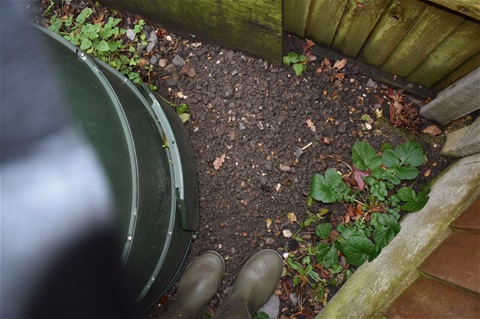
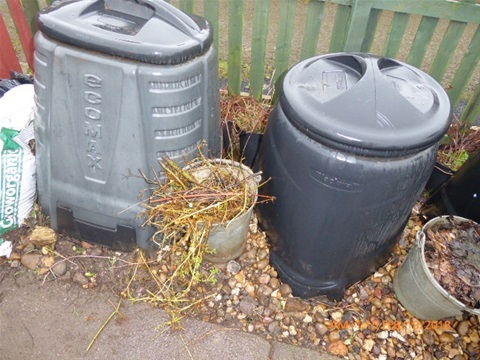
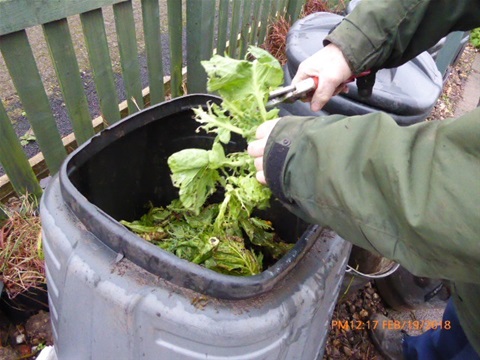
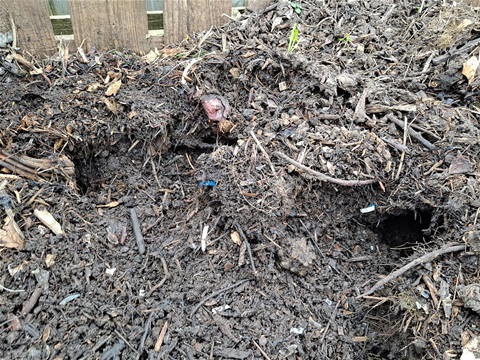
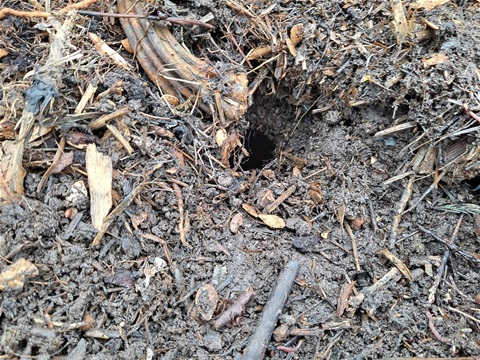
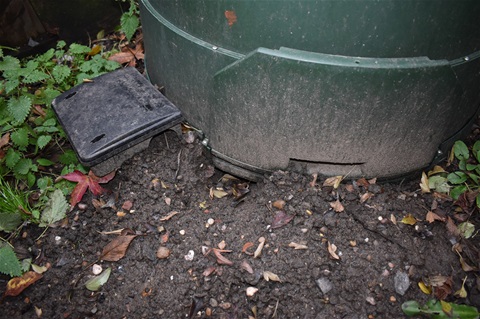
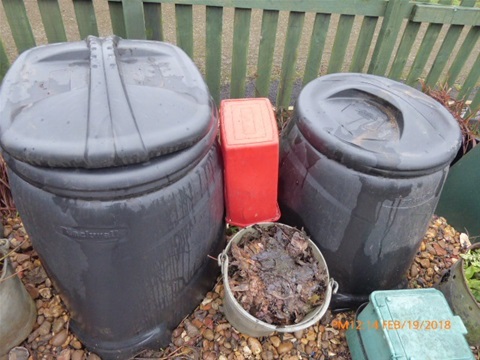
Nick
Great post this, or should I say... com-post HAA... OK nevermind . I see you have a green Johanna. I'm seeing very mixed reviews though. In your opinion is it a "good" composter?
. I see you have a green Johanna. I'm seeing very mixed reviews though. In your opinion is it a "good" composter?
Kay
Winter?
It is the end of June and rats are feasting around my garden and in my plastic compost bin. Just threw veggies scrap in and a rat ran out of the bottom of the (less full) compost bin
Sacha
Thank you for that information it was very useful..I recently notice tailed rodents in my bin to scared to make out think it's rats. It on the dirt. Shall I stop adding to it and change base.
MICHAEL
I found a nest of mice in mine. Not Rats. Does the same rules apply? I use this compost for my tomatoes, carrots and fruit trees.
thomas
I use a METAL dustbin... often discarded ,and stuff as much as possible in by stamping it in , The resulting 70 kilos of mush is then buried 6 inches down after 5month.....No rats !!
Toni
I have rats in 2 wooden compost bins in the garden. I have loads of mint around the bin.. it doesnt deter them and my pet rats love to eat mint! I am going to try extenal wire.
Catherine
In my experience 3-4 layers chicken wire under base, bent up to protect sides to 12" ( especially bins with door openings as these are a weak easily gnawed entry point for rats) & gravel all around
Shirley
I knew rats were getting into my compost bin, due to the tunnel going up through. But now I have found a dead rat, with maggots, so just want to abandon the compost bin. 😒
Sara
Hi Shirley. The rat will decompose and the maggots will eat the carcass, everything breaks down. Rats usually only go in a compost bin if they smell something tasty (to them).
Sarah Southgate
This article is a great help and I will turn the compost and wet it tomorrow. It was a rather a surprise for both me and the rat when I opened the lid! Thanks for writing this.
thomas
I’ve mixed up plaster of Paris and rolled oats and loaded bait into. Sealed bucket with a hole for access. This appears to work well
Bri Heath
Get a trap that catches them alive, place it by the compost bins, release the rats in the wild or despatch them humanely. Check the trap daily to avoid any suffering to the rats.
margo
Thanks - very useful as I am currently trying to deal with rats scavenging from my compost.
Rod
Hi Philippa
I have added a section to the rats in compost bin page
Philippa Winch
I am curious to know what the risks are of using garden compost and horse manure that have had rats living in or just visiting on the fruit and vegetable beds. There is evidence of rat faeces.
Sara Harclerode
Hi Philippa. I rinse my vegetables in a weak solution of water with old fashioned Sterilisation fluid. Followed up with a rinse of water. Rats are everywhere.